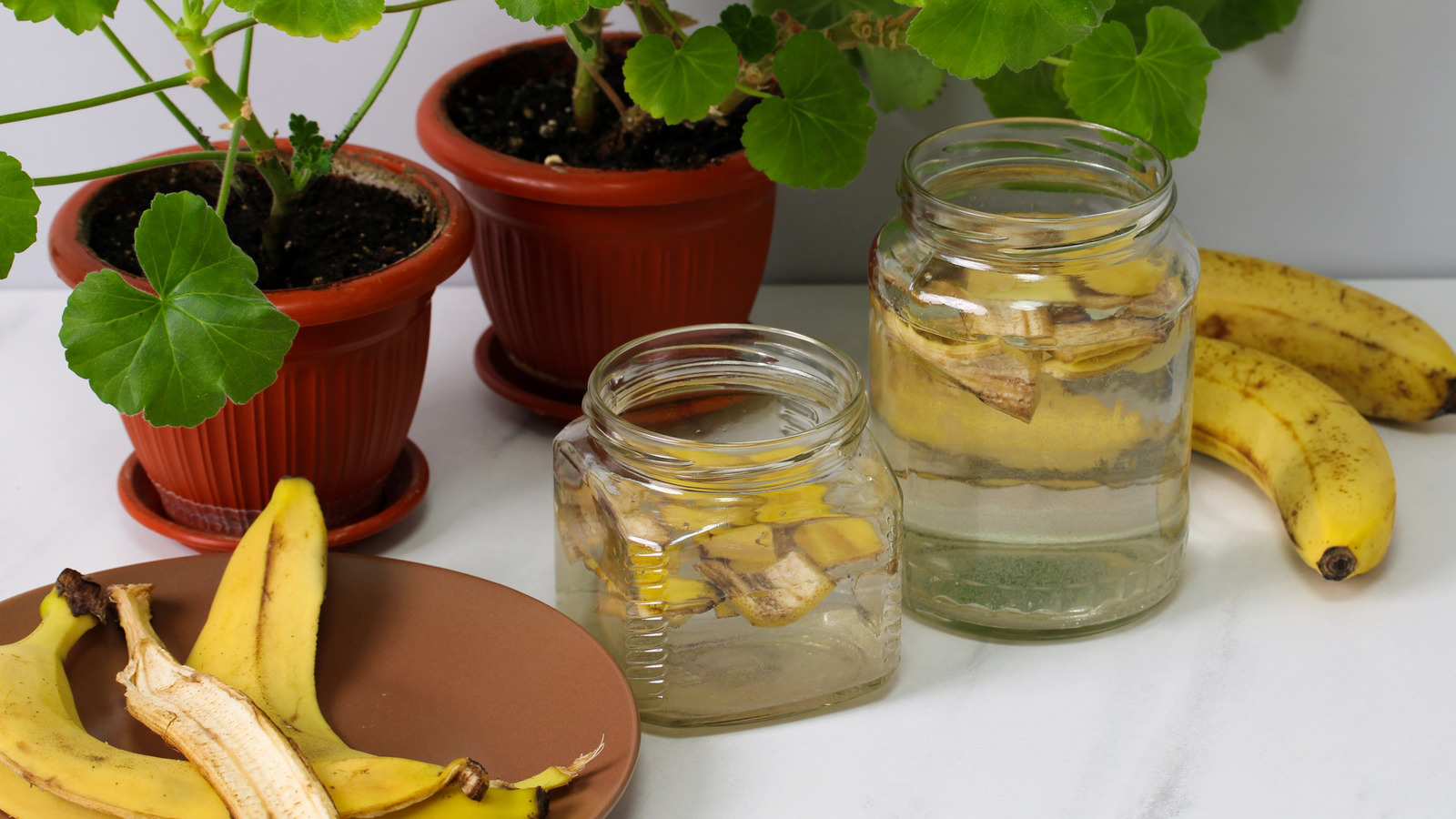
"The skins are rich in nutrients that are beneficial for plant growth and found in commercial fertilizers, including calcium, magnesium, potassium, and phosphorus. White vinegar makes soil more acidic, which can help certain plants absorb nutrients faster, and is also proven to extract minerals like calcium out of organic material, making it the perfect way to break down banana peels."
"To try it, put a couple banana peels in a clean container and add enough white vinegar to cover them completely. Put the lid on and let the peels soak for two days. Alternatively, whirl the ingredients in a blender to skip the extraction step. The mixture will keep for a few days when stored in a cool, dark place. Dilute it with water and apply around the base of your plants weekly to give them a nice dose of nutrition."
"Some fruits, veggies, and flowers really don't agree with the mixture of vinegar and banana peels. Popular plants that do well in slightly acidic soil include tomatoes, potatoes, azaleas, bell or hot peppers, and roses. Plants that need neutral or alkaline soil include asparagus, lavender, beets, peas, onions, and lettuce. Keep your banana peel fertilizer away from these crops and test the pH of your soil regularly, no matter what you use on your plants."
Banana peels contain calcium, magnesium, potassium, and phosphorus that support plant growth similarly to commercial fertilizers. White vinegar acidifies soil and helps extract minerals like calcium from organic matter, facilitating nutrient availability. To prepare a fertilizer, soak a couple of banana peels in white vinegar for two days or blend them, then dilute the mixture with water and apply weekly around plant bases. Store the solution in a cool, dark place for a few days. The treatment benefits acid-loving crops such as tomatoes, potatoes, peppers, azaleas, and roses. Avoid use on plants requiring neutral or alkaline soil and monitor soil pH regularly.
Read at Tasting Table
Unable to calculate read time
Collection
[
|
...
]